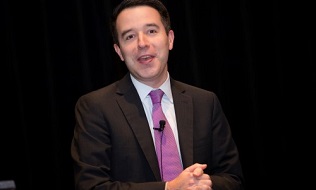

Employers should tread carefully before embracing more complex investment options for their defined contribution plans, according to a speaker at the recent Defined Contribution Investment Forum.
Speaking during a session at the Oct. 6 conference, John Croke, head of multi-asset product management at the Vanguard Group Inc., said he could understand why plan administrators watch jealously as their defined benefit counterparts go deep into alternative assets such as natural resources, direct real estate and private equity.
By contrast, he said the typical target-date fund includes “run-of-the-mill” passive investments and assets in “traditional, sleepy” sectors.
Read: Plan sponsors urged to consider key distinctions between DB, DC plans
“But I would argue it’s not for lack of ability or lack or sophistication that you don’t see more of these dynamic, sexier asset classes or more sophisticated strategies sprinkled into target-date funds and showing up elsewhere in DC plans,” Croke told attendees at the conference. “I think it’s out of respect and appreciation for the fact that DC plans are not DB plans.”
Croke said the key difference between the two is that in defined contribution plans, all of the risk resides with individual members.
“For any risk, any bet, any incremental risk that isn’t rewarded, there’s no way to cut a cheque and fund up that deficit. It’s something that is borne and realized by participants immediately,” he said. “That’s something we really just have to ground ourselves in and make sure we don’t lose sight of, as we have these fun debates about perhaps adding complexity or adding some sophistication to our DC menus.”
Read: How plan sponsors can set members up for retirement success
When it comes to target-date funds, Croke said simplicity and transparency go a long way, thanks to the lack of information fund managers have about individual investors, other than a date of birth and an approximate retirement date.
He said he finds it “hard to get comfortable” with target-date funds that go after idiosyncratic asset classes or incorporate annuities into the default product, because it’s hard to tell whether that approach will “effectively serve the wide variety of lifestyles, preferences, financial situations” and life expectancies among plan members.
“You’re making a pretty deep, personal decision with really one piece of information,” Croke added.
He suggested a well-managed and straightforward target-date fund with a thoughtfully plotted glide path can take the guesswork out of the process for plan sponsors.
“There are no surprises about what’s driving performance. Also, your participants can understand what’s going on underneath the hood and have confidence in this investment,” said Croke.
Read more articles from the 2017 DC Investment Forum
